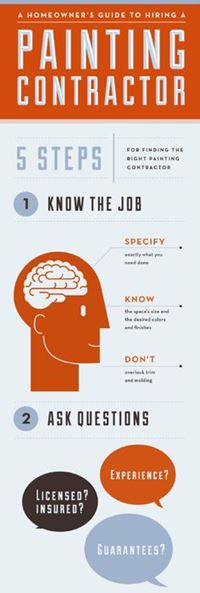Understand How Seasonal Problems Impact The Success Of Industrial Exterior Painting And Find Out The Excellent Periods To Ensure Lasting Outcomes For Your Project
Understand How Seasonal Problems Impact The Success Of Industrial Exterior Painting And Find Out The Excellent Periods To Ensure Lasting Outcomes For Your Project
Blog Article
Authored By-Fox Chaney
When you're planning an industrial outside painting job, seasonal factors can make or break your results. You'll intend to take into consideration exactly how temperature level and humidity impact paint application and drying times. Choosing the right period can guarantee your paint sticks appropriately and lasts longer. Yet which periods are truly the very best for this kind of job? Allow's discover the key elements that can affect your task's success.
The Impact of Temperature Level on Paint Application
When you're planning a commercial exterior paint task, the temperature can substantially impact just how well the paint sticks and dries out.
Ideally, you wish to repaint when temperature levels vary between 50 ° F and 85 ° F. If it's as well cold, the paint might not cure appropriately, leading to concerns like peeling or fracturing.
On the flip side, if it's also warm, the paint can dry out as well quickly, preventing proper attachment and resulting in an unequal coating.
You need to likewise consider the time of day; early morning or late afternoon uses cooler temperature levels, which can be extra positive.
Always examine the manufacturer's recommendations for the details paint you're utilizing, as they usually supply advice on the perfect temperature level range for ideal outcomes.
Humidity and Its Effect on Drying Times
Temperature isn't the only ecological factor that influences your commercial exterior painting job; moisture plays a considerable function as well. High humidity levels can slow down drying out times substantially, influencing the general quality of your paint work.
When the air is filled with wetness, the paint takes longer to treat, which can result in problems like poor adhesion and a greater risk of mildew growth. If you're re painting on a particularly moist day, be planned for extended wait times between layers.
It's essential to keep an eye on neighborhood weather conditions and plan appropriately. Ideally, go for humidity levels between 40% and 70% for optimum drying out.
Maintaining these factors in mind ensures your project stays on track and provides an enduring finish.
Best Seasons for Commercial Outside Painting Projects
What's the most effective season for your industrial outside painting tasks?
Spring and very early fall are generally your best choices. During these periods, temperature levels are mild, and humidity levels are commonly lower, producing excellent problems for paint application and drying out.
Avoid summertime's intense heat, which can trigger paint to completely dry as well promptly, resulting in poor adhesion and surface. Similarly, winter season's cold temperatures can hinder proper drying and treating, risking the durability of your paint work.
Go for days with temperature levels between 50 ° F and 85 ° F for ideal outcomes. Remember to check sherwin williams color consultant for rain, as damp conditions can wreck your task.
Planning around these aspects guarantees your paint project runs smoothly and lasts longer.
Conclusion
To conclude, preparing your commercial outside painting jobs around seasonal factors to consider can make a substantial difference in the outcome. By scheduling work during the ideal temperatures and humidity levels, you'll guarantee far better attachment and drying times. Bear in mind to watch on local weather forecasts and choose the correct time of year-- spring and very early autumn are your best bets. Taking these actions will certainly help you accomplish a resilient and professional surface that lasts.
